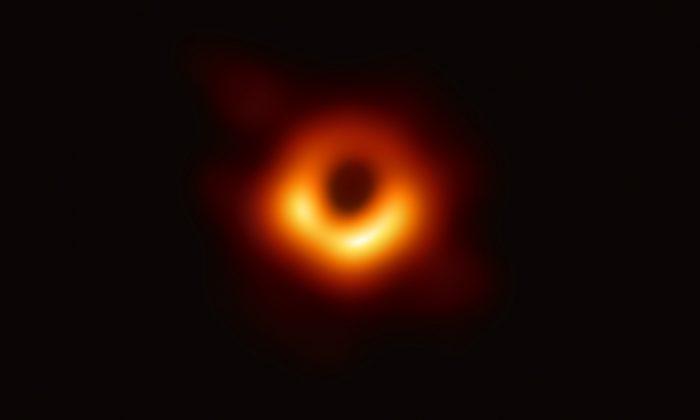Astronomers have released the first ever photograph of a black hole.
Scientists used a network of eight telescopes around the world to capture the image of a vast black hole located in a far-flung galaxy.
Measuring 25 billion miles in diameter, the black hole is larger than our entire solar system.
The much-anticipated breakthrough was announced March 10, in a series of six papers published in a special issue of The Astrophysical Journal Letters.

The black hole is 55 million light-years from Earth and has a mass 6.5 billion times that of the sun.
Black holes are formed by the collapse of particularly massive stars, which generate a gravitational pull so strong that not even light can escape.
This, combined with the fact that black holes are usually relatively small, makes viewing them very difficult.
In the past, astrophysicists would infer their existence from the movement of other stars or planets.
Rather than looking for the black hole itself, scientists looked for the telltale ring they produce.
“If immersed in a bright region, like a disc of glowing gas, we expect a black hole to create a dark region similar to a shadow—something predicted by Einstein’s general relativity that we’ve never seen before,” explained EHT Science Council Chairman Heino Falcke of Radboud University, the Netherlands.
“This shadow, caused by the gravitational bending and capture of light by the event horizon, reveals a lot about the nature of these fascinating objects and allowed us to measure the enormous mass of M87’s black hole.”

The ring-like structure in the image follows the predictions made by current theoretical understandings of black holes.
“Many of the features of the observed image match our theoretical understanding surprisingly well,” remarked Paul T.P. Ho, EHT Board member and director of the East Asian Observatory. “This makes us confident about the interpretation of our observations, including our estimation of the black hole’s mass.”
The project is named after the boundary of a black hole past which not even light can escape—the event horizon.
One of the challenges the team had was to find a black hole large enough to be seen. Although black holes are formed from stars at least four times larger than our sun, once they collapse, they are tiny in comparison to most objects in space. The smallest known black hole is just 15 miles in diameter.
“It is an absolute monster, the heavyweight champion of black holes in the Universe.”
The powerful nuclear reactions occurring inside stars keeps them from collapsing under their own gravitational pull. When that nuclear fuel runs out, they collapse in on themselves, which increases their density, and in turn, increases the gravitational force of the collapse.





